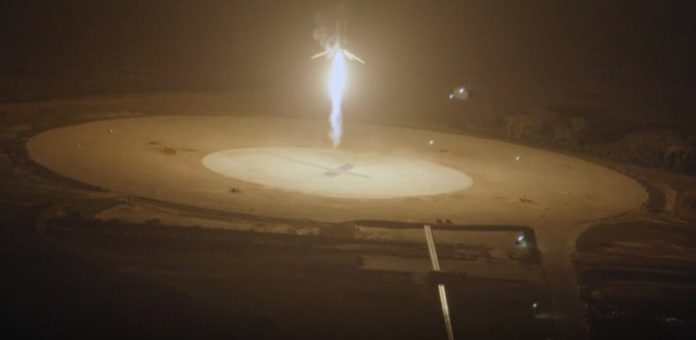I’ve been wanting to write this headline for awhile. When SpaceX first began launching, steering, and landing rockets a few years ago, the dream of reusable rockets began to seem less dreamlike. But those first tests weren’t much more than a few hundreds of meters high. The real test would be a live launch delivering a payload to orbit.
SpaceX began those tests this year over the Atlantic Ocean, where a mishap would do little harm. After a first successful soft landing over water, they maneuvered a flat-topped barge into position and attempted to land on that. Both attempts ended in fiery explosions, but progress was being made. While the first was basically an uncontrolled skid across the deck, the second was closer—teetering and tipping over at the end.
Then disaster struck.
The third attempted barge-landing exploded on ascent due to a faulty strut. It was a blow to the company, but not the end. SpaceX announced last week they would not only return to flight, but would attempt to land their rocket on solid ground at Cape Canaveral.
Regaining control of a SpaceX Falcon9 has been described as balancing a rubber broom on your finger in a wind storm. Only this is a 135-foot broom traveling between Mach 5.5 and 7.5 and spitting flame out the back. It’s no easy task, as earlier attempts made clear.
Well, now the rubber broom has landed! Yesterday, SpaceX successfully recovered the first stage of a Falcon 9 rocket after boosting a payload of satellites into orbit.
And that’s a big deal for the future of space exploration.
Plenty of other articles are covering the news—from the forecast reusable rockets could reduce costs 100-fold to Musk’s Mar’s dreams and the continuing Musk-Bezos Twitter feud. (For the record, the two rockets are very different—see here for a good comparison.)
And I might add, this is just the beginning.
SpaceX still has to repeat the feat, learn to economically recondition rockets (because launch is a violent affair), make the second stage reusable (which is a smaller fraction of the overall cost and also more difficult to bring home), and finally, establish a track record of safe launches of reconditioned rockets for prospective customers.
We’ll likely return to this topic in the not too distant future.
But for now, pending deeper meditations, it felt wrong not to mark the occasion. It’s an exciting time for space exploration, and though challenges remain, the future looks bright.
So, enjoy watching SpaceX’s spectacular feat in action!
Image Credit: SpaceX/YouTube



